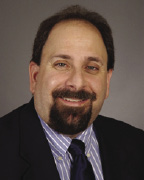According to a recent Wall Street Journal article, it's been estimated that businesses actually use as little as 5% of tax breaks that they are entitled to claim. Complexity and lack of awareness of the various incentives are two of the main reasons for this.
Tax incentives have been used over the years in an attempt to influence behavior of businesses. For example, to spur the development of energy efficient buildings, the Energy Policy Act of 2005 added Section 179D to the Internal Revenue Code, allowing a deduction for part or all of the cost of energy efficient commercial building property the taxpayer places in service after December 31, 2005.
Section 179D was created to give taxpayers who own or lease commercial buildings an incentive to be energy efficient, but when the owner is a government agency, any federal income tax incentive is usually meaningless. To work around this limitation, Section 179D allows the governmental building owner to pass the deduction through to the designer of the building, to the potential benefit of architects, engineers, contractors, environmental consultants and energy service providers, as long as they are considered the designer who created the technical specifications for installation of energy efficient commercial building property.
Thanks to Section 179D, designers may be allocated tax deductions of up to $1.80 per s/f when they design energy efficient buildings for government agencies. For a 100,000 s/f building, that adds up to a maximum deduction of $180,000. For a typical architectural or engineering firm, based on a 35% federal tax rate, that's a tax savings of $63,000.
The deduction is available with respect to property placed in service through December 31, 2013 for designs that save at least 50% of the energy and power costs, compared to a reference building that meets Standard 90.1-2001 (as in effect on April 2, 2003) of the American Society of Heating, Refrigerating and Air-Conditioning Engineers (ASHRAE). Each of three components of a building, (1) the interior lighting systems, (2) heating, cooling, ventilation, and hot water systems, and (3) the building envelope must be separately reviewed and are each eligible for a deduction of $.60 per s/f. All three components must separately qualify in order to obtain the full $1.80 per s/f deduction. It's not uncommon to find that only one of the building components (typically the lighting) qualifies for the deduction. In addition, recent IRS guidance may allow for property to partially qualify for the deduction.
To obtain a deduction for any of the building components, the designer must obtain a certification demonstrating that the required energy savings will be achieved. Certification must be obtained through a qualified third party, using software approved by the U.S. Department of Energy. Approved software is listed on the agency's Web site: www.energy.gov. The certification process must also include a field inspection of the building.
When more than one designer is responsible for creating the required technical specifications, the building owner may allocate the entire deduction to the primary designer or may allocate the deduction among multiple designers. This allocation must be in writing.
While Section 179D took effect in 2006, many were not aware of the benefit for several years. In March, 2008, the IRS issued Notice 2008-40, the first formal guidance with respect to the pass-through of the deduction from government agencies to the building designer. Two years after its enactment was the first time that many qualifying businesses and their advisors became fully aware of this tax incentive. Due to the many complexities surrounding Section 179D, consultation with a qualified specialist in the area is necessary.
The future of Section 179D is unknown. Currently scheduled to expire at the end of 2013, there has been discussion in Washington of extending the expiration date and possibly increasing the amount of the deduction.
This column is intended to raise awareness about Section 179D. It does not address every aspect of the law. Be sure to consult with a tax advisor who has expertise in this area in order to ensure that a project meets all the requirements necessary to qualify for the deduction.
Stephen Minson, CPA is a partner in the commercial business group at DiCicco, Gulman & Co., Woburn, Mass.
Tags:
Section 179D: Do not miss out on tax benefits for energy efficient commercial buildings
October 18, 2012 - Construction Design & Engineering
 (1).jpg)








.png)